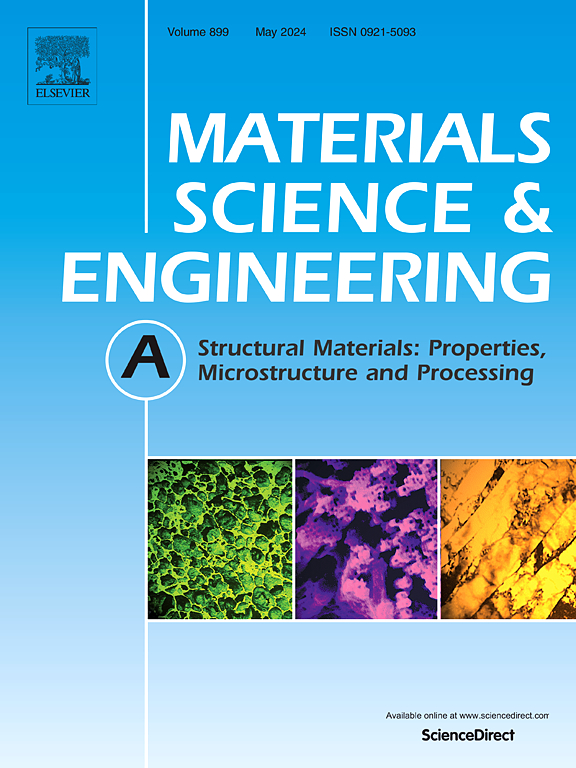Laser powder bed fusion of TiN - high nitrogen steel composite: Microstructure and strengthening mechanism
IF 6.1
2区 材料科学
Q1 MATERIALS SCIENCE, MULTIDISCIPLINARY
引用次数: 0
Abstract
High nitrogen steel (HNS) produced by laser powder bed fusion (LPBF) has relatively excellent strength, but its ductility is poor. HNS + TiN is obtained by coating the HNS powder with the second phase, on the basis of which the changes in the microstructure of HNS + TiN formed via LPBF and the effects of the addition of the second phase on the mechanical property of HNS are systematically analyzed and the strengthening mechanism of HNS matrix composites is further elaborated. The microstructure of the samples formed via LPBF, HNS and HNS + TiN, are mainly composed of δ - ferrite and γ - austenite. The microstructures are characterized by changes in γ - austenite phase content, the average grain size after the addition of TiN, and the mechanical properties show changes, especially in ductility, with the elongation of the HNS + TiN sample reaching up to 16.25 %. and the average elongation is 3.3 times higher than that of HNS. The strengthening mechanism of the HNS + TiN is analyzed using EBSD, TEM and other characterization methods, the results show that Mn2TiO4 precipitates first at the grain boundaries and intracrystalline in the HNS + TiN, which plays a role in the second phase of solidification and grain refinement, and then the TiN is precipitated along the boundaries of Mn2TiO4. This study provides a new perspective to understand the relationship between microstructure and the mechanical properties of the HNS + TiN composite formed by LPBF, and provides a reference for the selection and application in LPBF in the future.
求助全文
约1分钟内获得全文
求助全文
来源期刊

Materials Science and Engineering: A
工程技术-材料科学:综合
CiteScore
11.50
自引率
15.60%
发文量
1811
审稿时长
31 days
期刊介绍:
Materials Science and Engineering A provides an international medium for the publication of theoretical and experimental studies related to the load-bearing capacity of materials as influenced by their basic properties, processing history, microstructure and operating environment. Appropriate submissions to Materials Science and Engineering A should include scientific and/or engineering factors which affect the microstructure - strength relationships of materials and report the changes to mechanical behavior.
 求助内容:
求助内容: 应助结果提醒方式:
应助结果提醒方式:


